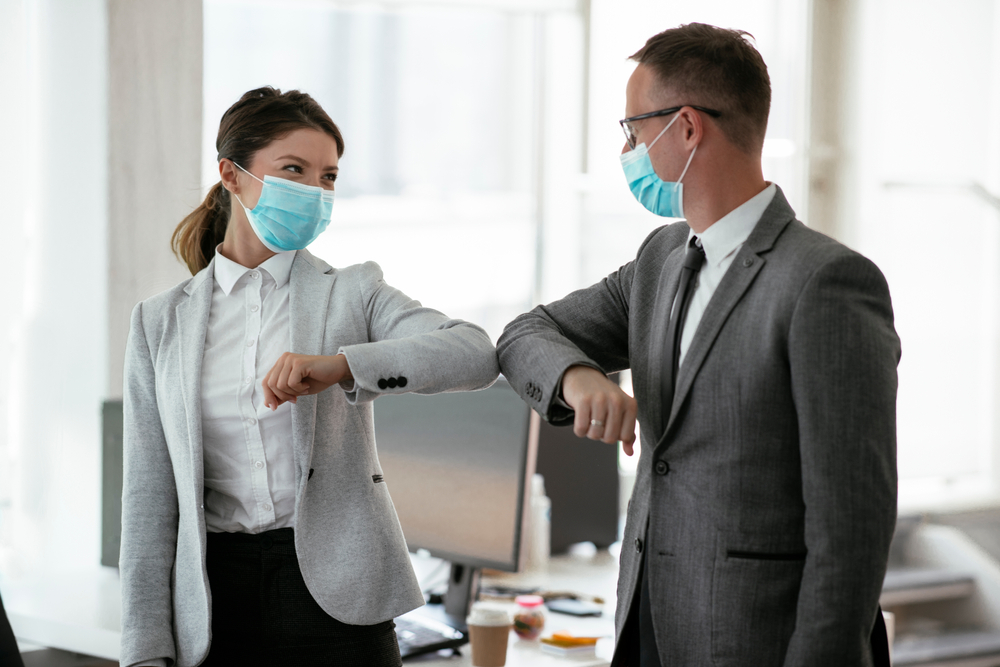As we look back at how the past year has changed our lives, one thing is true across the board: The pandemic has shed light on several silver linings. From spending more time with our family and furry friends to finding time for a new hobby and working from home, the pandemic made us appreciate the little things that might not have been top of mind before March 2020.
Many of the positive outcomes are being considered by employers as they plan to bring employees back into the office, but the most important of all is the health and well-being of their employees. The pandemic sparked worry among many as it relates to personal physical and mental health. Business leaders need to prioritize and ensure the office is prepared to put the team’s health first. Here are a few things to consider when prioritizing your team’s health and planning your office return.
Say Goodbye to the Cubicle
The evolution of office design in the last 15 years has shifted from cubicle-dominated office spaces to open-concept layouts made up of multipurpose tables, treadmill desks, and sit/stand desks. Whether this is a popular move or not depends on whom you talk to. But one thing is certain after working from kitchen counters for more than a year: The cubicle is not conducive to a healthy and active work environment.
One’s environmental comfort plays largely into his or her health. If employees’ workspaces don’t fit their physical needs, provide the ability to move around, or have plenty of space to perform all duties, then stress levels can rise. When that happens, tensions rise, illnesses can appear, and there are dozens of stress-related health problems that can affect the cubicle worker. Not only will open-concept offices benefit individuals, but they will also promote a collaborative work environment for all—it’s a win-win.
Say Hello to Functional and Psychological Comfort
Functional comfort is a measurement of the ergonomics of your work environment. This includes everything from the lighting overhead to the chair you sit in. Employees will crave the comfort of a desk chair and designated workspace after 15 months of working from a makeshift desk at home.
The one-size-fits-all furnishings that were common among companies before the pandemic force employees to adapt to what’s available and, among other things, can lead to improper posture, which can ultimately lead to back, neck, and shoulder problems. Even practicing perfect posture still doesn’t solve the issue of prolonged sitting. In fact, sitting too long can lead to fatigue, which further affects your posture as you get tired. One should try to stand and move around every so often.
Not to mention, there is also the feature of psychological comfort, which is when workers feel they have ownership of their situation and are in control—they feel like they belong there. This is certainly not the way it is in a cookie-cutter workplace created by someone else. Employers should consider creating a workplace centered on the concept of facilitating creativity, involvement, and innovation.
Promote Exercise in the Workplace with Unique Furnishings
In a recent study by the Icahn School of Medicine at Mount Sinai, in collaboration with researchers from the Center for Active Design, it was shown that office workers claim they feel better physically, they are more active on and off the job, and they are considerably more productive if given the opportunity to both sit and stand while working. By offering stations or individual workspaces that get employees moving, you will improve their health and well-being and boost their energy and productivity in the workplace. Employers might consider a few treadmill-desk stations around the office that employees can reserve or several standing desks that encourage team members to get up out of their chairs and stretch their legs.
Ergonomics easily translates to a healthy work environment, and that’s what it’s all about.
But it goes beyond just the access to ergonomic and functional workstations. When it comes to health, there is a level of responsibility that falls on the individual, as well. Sit/stand desks help promote stretching and exercising throughout the day—from squats and chair dips to leg extensions and heel raises.
The Takeaway
With some workers eager to get back into the office—one with a dedicated space that won’t be shared with children, a partner, or a pet—prioritizing health and wellness when revamping your company’s work environment will be key. Providing employees with an open, collaborative space and the option to sit or stand during the workday is the first step to a healthier work experience.
Barry Carson is the CEO of MojoDesk. He loves figuring out how new technologies can be used to make someone’s life simpler. In 1991, MojoDesk’s parent company Xybix saw the potential in designing user-friendly, ergonomic, sit-to-stand desks for organizations that needed their employees healthy, alert and productive 24/7. Since then they have sold directly to businesses and government agencies such as the FBI, Mayo Clinic, fire departments, and thousands of 911 call centers. MojoDesk division was started in 2018. It is the brand’s first direct to consumer product and built to the same commercial standards.

